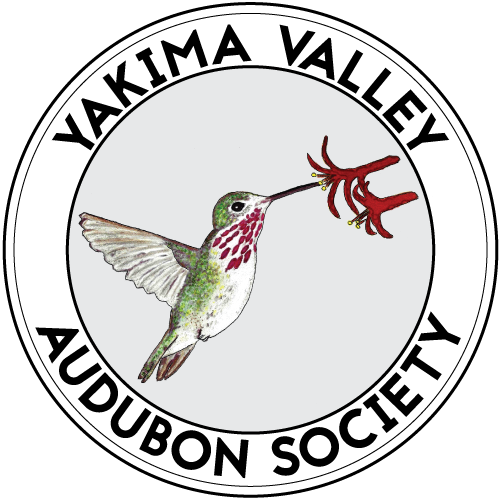Vredenburgh Bluebird Trail - They did it!! Wait, who did what??
General ·In 1982, YVAS members put up 57 nest boxes in the Wenas area. The trail was expanded over the years and now has 132 nest boxes along a 14 mile stretch of North Wenas Road between Audubon Road and Durr Road. In 1994, the trail was named in honor of Virginia and Harold Vredenburgh to recognize their years of tireless devotion to help bluebirds flourish in Yakima County. YVAS members continue to monitor the boxes weekly throughout each breeding season. Sponsorship of individual boxes has been a hallmark of the trail since its inception.
So that is part of the who did what referenced in this article’s title. As radio broadcaster Paul Harvey (active on the airwaves from World War II until his death in 2009) would say on his show, ‘now for the rest of the story’ …the bluebirds themselves.
I first monitored one-half of the Vredenburgh Trail in 1998 and was immediately hooked. While YVAS has records on the trail going back to its inception in 1982, I assumed the responsibility of compiling the yearly recap in 2004. At that time, I was given a trove of records and quickly discovered a chart inserted in the 1996 Crier compiled by Bill and Edith Ryan depicting the year by year fledge success of the trail. I noted that the yearly fledge total exceeded 500 (508) birds for the first time in 1987. A year total of 500 or more was not recorded again until 1997 (533) for a new record only to be broken in 1998 (550).
The year 2000 mustered 542 exceeding the magic 500 number for the fifth time. The trail was averaging nearly 440 fledges a year with some years below 400. As those who came before me had done, I fantasized about setting a new record. It was slow in coming but in 2008 (569) and 2009 (578) the bar was set higher. It seemed inevitable that 600 could be reached.
However the weather in 2010 slapped the bluebirds and me in the face and only 378 birds took flight from the nest boxes. In several subsequent years, favorable weather for the entire nesting season was elusive. Many a promising start would be nipped by cool and wet weather in the spring or excessively hot and dry summers…both variables undoubtedly impact the insect population and without insects, nestlings suffer losses.
2014 (553) and 2016 (542) were bright spots that kept faint hopes of a 600+ year alive but I no longer associated the word ‘inevitable’ with the prospect. This year on an early May monitoring trip on the lower half of the trail, Joe and Karen Zook were pleased to find bluebirds active at 62 of the 66 boxes they checked. Twentyeight boxes already contained eggs and one box actually had six young nestlings, somewhat remarkable for May 14 in recent years!
In the same time frame, the upper-half of the trail suffered the loss of three boxes over the winter and then an additional four were stolen after the initial monitor check. By Memorial Day weekend when Audubon Campers monitor the boxes, bluebird activity was unusually high and Box 125, dedicated to the memory of Virginia Vredenburgh, had fledged four Mountain Bluebirds.
Have you ever prepared a batch of popcorn? The kernels heat slowly, and then a few begin popping followed by a short span when there is a crescendo of exploding kernels. That is what June on the trail was…eggs popping and nestlings everywhere! The stage was set for a record but what of the coming heat of July and August and its effect on second nest attempts?
Once again, summer was hot and dry. Birds balked. Eight new nests on the first section of the trail alone were abandoned without any eggs laid. Plus a total of 29 nestlings perished overall in this period on the trail.
Bluebirds and bluebirders are resilient breeds. But would both be forced once again to take up Major League Baseball’s Chicago Cubs’ mantra of ‘Wait ‘til next year!’ After all, every new season starts fresh and full of hope.
Did the trail set a new record? Was 600 reached? Sorry folks, but to learn the rest of the story you must search at the bottom of the chart on page eight (October 2018 Calliope Crier).
— Richard Repp
